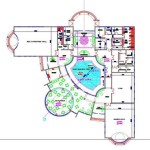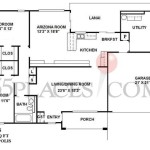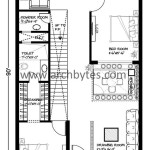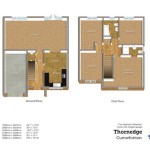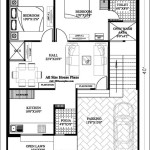How to Create a Seating Plan in Excel
Creating a seating plan is a common task across many contexts, from organizing a conference room to arranging a classroom or even planning a wedding reception. While specialized software exists for this purpose, Microsoft Excel provides a flexible and accessible alternative. By leveraging its grid-based structure, formula capabilities, and visual tools, Excel can effectively manage seating arrangements and associated data. This article outlines a step-by-step guide on how to construct a functional and visually informative seating plan using Excel.
The initial step involves setting up the basic structure of the seating plan. This requires understanding the layout of the space and translating it into an Excel grid. Considerations should be given to the dimensions of the room, the shape and size of the tables or seating areas, and any fixed elements like walls, doors, or stages.
Setting Up the Excel Worksheet for the Seating Plan
Begin by opening a new Excel worksheet. To represent the room accurately, the cell sizes need adjustment. Select all cells and adjust the column width to a smaller value, typically around 3-4 points. This creates a grid-like appearance suitable for representing physical space. Similarly, adjust the row height to achieve a more square-shaped grid.
Next, sketch the room's layout on paper. This includes identifying the positions of walls, entrances, and other fixed features. Transfer these features to the Excel grid by outlining them using cell borders. Select the cells representing the wall sections and apply a thick border using the "Format Cells" option (right-click and choose "Format Cells" or use the ribbon). Choose a dark color and a thicker line style for clear visual distinction.
Represent tables or seating areas using rectangular blocks of cells. Determine the number of cells required to represent each table based on its size and shape. Fill these cells with a distinct color using the "Fill Color" option in the ribbon's "Home" tab. This visual cue delineates the different seating locations within the plan.
Label each table or seating area with a unique identifier. This can be a number, a letter, or a combination of both. Type the identifier into a cell within the table representation. Ensure the text is legible by adjusting the font size and color as needed. Consider using the "Merge & Center" function to combine cells within the table representation to create a central label.
To further enhance the visual representation and information management, consider adding a key or legend. Create a separate area on the sheet to define the color codes and table/seat identifiers used in the plan. This improves clarity and allows for quick reference when interpreting the seating arrangement.
Entering and Managing Seating Data
Once the visual layout is defined, the next crucial step is to associate individuals with specific seats. This involves creating a data table to store information about each attendee or participant and linking this data to the corresponding cell representing their seat in the plan.
Create a separate table within the same worksheet, or on a new sheet, to store attendee information. This table should include columns for information such as name, contact details, dietary restrictions, or any other relevant data. Ensure the table includes a unique identifier for each individual, which will be used to link the person to their assigned seat.
To link the attendee data to the seating plan, use Excel's data validation and lookup functions. Select the cell representing a specific seat. Go to the "Data" tab on the ribbon and choose "Data Validation." In the "Settings" tab, choose "List" from the "Allow" dropdown menu. For the "Source," select the range containing the list of attendee names or identifiers from the data table. This creates a dropdown list in the seat cell, allowing you to select an attendee from the list.
Once an attendee is selected, the cell displaying the seat assignment shows the chosen name or identifier. To display additional information about the attendee directly within the seating plan, use the `VLOOKUP` function. In a cell nearby the seat, enter the following formula: `=VLOOKUP(A1, DataSheet!A:C, 2, FALSE)`. Replace `A1` with the cell containing the attendee's name (the seat cell). Replace `DataSheet!A:C` with the range of the data table containing the attendee information. The `2` indicates the column number containing the desired information (e.g., dietary restrictions). `FALSE` ensures an exact match. Repeat this process for other relevant information, adjusting the column number accordingly.
Conditional formatting can be employed to visually highlight specific attendee attributes. For example, you could highlight individuals with dietary restrictions or those requiring special accommodations. Select the cells representing the seats. Go to the "Home" tab and choose "Conditional Formatting." Create a new rule based on a formula. The formula would check if the cell displaying the dietary restriction information contains a specific value (e.g., "Vegetarian"). If true, the cell's format (e.g., fill color) would change to visually indicate the dietary requirement.
Enhancing and Customizing the Seating Plan
After setting up the basic structure and linking the data, the seating plan can be enhanced for improved clarity, functionality, and aesthetics. This includes customizing the visual appearance, adding interactive elements, and incorporating advanced features for data management.
Customize the appearance of the seating plan by adjusting cell colors, fonts, and borders. Use different colors to represent different types of seating areas or groups. Adjust font sizes and styles to improve readability. Experiment with different border styles to create a more visually appealing and informative plan.
Add interactive elements to the seating plan by using hyperlinks. For example, hyperlink the seat cell to the corresponding row in the data table. This allows for quick access to the detailed information about the assigned attendee. To create a hyperlink, right-click the cell and choose "Hyperlink." Select "Place in This Document" and choose the cell in the data table containing the attendee's information.
Implement data filters and sorting to easily manage and analyze the seating arrangement. Select the data table and go to the "Data" tab. Click "Filter" to add filter dropdowns to each column header. Use these filters to quickly find attendees with specific attributes or to sort the data by name, table number, or other criteria. Advanced filtering can be used for more complex queries.
To avoid accidental modifications to the seating plan layout, consider protecting the worksheet. Go to the "Review" tab and click "Protect Sheet." Choose the elements users are allowed to edit, such as the seat assignment cells, and set a password to prevent unauthorized changes to the underlying structure.
If the seating plan involves assigning seats based on specific criteria, consider using Excel's Solver add-in to automate the assignment process. Solver can optimize the seating arrangement based on constraints such as relationship preferences, avoiding conflicts, or maximizing group cohesion. This requires formulating an objective function and defining constraints to be solved by Solver.
For large seating plans, consider splitting the plan into multiple sheets and using hyperlinks to navigate between different sections. This improves performance and allows for easier management of complex layouts. Each sheet can represent a different area of the venue or a different category of attendees.
By following these steps, you can effectively create and manage a seating plan in Excel. The flexibility and power of Excel allow tailoring the plan to specific needs and preferences, making it a valuable tool for a variety of organizational tasks.

Microsoft Excel 02 Create A Seating Chart

Seating Chart Planner Excel Hash Episode 3 Campus

Seating Chart Planner Excel Hash Episode 3 Campus

Excel Seating Plan With Charts Contextures Blog

Seating Chart Planner Excel Hash Episode 3 Campus

How To Create A Seating Chart For Wedding Or Event Microsoft Office Template

Banquet Table Seating Planner

Seating Chart Planner Excel Hash Episode 3 Campus

Create Your Seating Chart With Microsoft Office And Perfecttableplan

Plan Your Party Seating With Excel Contextures Blog

